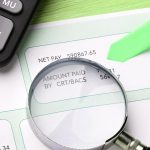Understanding Mortgage Loan Fraud Audits: A Complete Guide
Introduction
Mortgage loan fraud has been a significant issue within the financial sector, affecting lenders, homeowners, and investors. This type of fraud is a deceptive practice that can result in severe consequences, including financial losses, legal penalties, and damaged reputations for all parties involved. As the real estate market grows and evolves, mortgage loan fraud becomes more sophisticated, requiring comprehensive and thorough audits to detect and prevent fraudulent activities. Mortgage loan fraud audits are essential in identifying inconsistencies, irregularities, and fraudulent schemes in the mortgage lending process.
A mortgage loan fraud audit is a detailed examination of mortgage loan documents, processes, and practices to uncover potential fraud or misrepresentation. These audits are designed to protect all parties involved in the mortgage process, from lenders and investors to homeowners. A well-executed audit not only detects fraud but also helps prevent future incidents, ensuring a more secure financial system. As more homeowners and institutions are becoming aware of the impact of mortgage fraud, the demand for these audits is growing, making it a critical service for maintaining the integrity of the mortgage industry.
In this guide, we will explore the importance of mortgage loan fraud audits, the types of fraud they help uncover, how audits are conducted, and why they are essential for protecting your financial interests. Whether you’re a lender, a homeowner, or a real estate professional, understanding how these audits work can save you from financial and legal troubles. By the end of this article, you will have a comprehensive understanding of mortgage loan fraud audits and how they can help secure your financial future.
What is Mortgage Loan Fraud?
Mortgage loan fraud is a serious crime that occurs when individuals or groups intentionally misrepresent or deceive others in the mortgage application process. Fraud can be committed by borrowers, lenders, brokers, or other parties involved in the transaction. The primary goal of mortgage loan fraud is to gain financial benefit through false information or illegal actions, such as inflating income, falsifying asset documentation, or misrepresenting property values.
There are two primary types of mortgage loan fraud: borrower fraud and lender fraud.
Borrower Fraud
Borrower fraud occurs when the borrower intentionally provides false information or misrepresents their financial situation to secure a mortgage loan. Some common forms of borrower fraud include:
- Income Misrepresentation: Falsifying income statements or inflating salary information to qualify for a larger loan.
- Asset Misrepresentation: Providing false information about the borrower’s assets, such as bank statements, to make it appear they have more funds available than they do.
- Property Misrepresentation: Overstating the value or condition of the property to secure a higher loan amount or to obtain approval for a mortgage.
Lender Fraud
Lender fraud occurs when the lender, broker, or other industry professionals intentionally engage in fraudulent practices. This could involve:
- Loan Document Falsification: Lenders may alter loan documents to deceive borrowers or investors.
- Kickbacks: A lender or broker may offer illegal kickbacks or incentives to borrowers or appraisers to secure loans under false pretenses.
- Negligent Lending Practices: Lenders may approve loans without proper verification of borrower information, facilitating fraudulent activity.
Mortgage loan fraud not only puts the lender at risk but also harms homeowners and investors, creating a ripple effect in the housing market and the broader economy.
Importance of Mortgage Loan Fraud Audits
Mortgage loan fraud audits are essential for uncovering fraud and ensuring the integrity of the mortgage process. The purpose of these audits is to thoroughly review loan documents, borrower information, and other related materials to identify discrepancies, irregularities, or fraudulent activity. The findings from these audits can help protect lenders, investors, and homeowners by preventing further fraudulent actions and mitigating financial losses.
A mortgage loan fraud audit serves several purposes:
- Detecting Fraud: The audit helps uncover fraudulent activities such as income misrepresentation, falsified documents, and inflated property values.
- Preventing Future Fraud: By identifying weak points or gaps in the mortgage process, audits help lenders implement stricter guidelines and improve their practices to reduce the risk of fraud.
- Mitigating Financial Losses: Detecting fraud early in the process helps minimize financial losses for both lenders and homeowners.
- Ensuring Compliance: Audits ensure that all mortgage transactions comply with industry regulations and legal requirements, avoiding legal troubles and penalties.
- Preserving Reputation: Lenders who conduct regular fraud audits demonstrate a commitment to integrity, which helps build trust and credibility with borrowers and investors.
Mortgage loan fraud audits are a proactive approach to identifying risks and ensuring the security of financial transactions in the mortgage industry.
How Mortgage Loan Fraud Audits are Conducted
Mortgage loan fraud audits are comprehensive examinations that involve several steps to ensure all aspects of the loan process are thoroughly reviewed. These audits typically involve a detailed examination of mortgage documents, borrower information, property appraisals, and lender practices.
Step 1: Review of Loan Application
The audit begins with an in-depth review of the loan application. This includes verifying the accuracy of the borrower’s information, such as income, employment history, assets, and liabilities. Auditors cross-reference the information provided in the application with supporting documentation, such as tax returns, pay stubs, and bank statements.
Step 2: Verification of Property Information
Next, the auditor will review the property information, including the appraisal report, to ensure the property value is accurately represented. This step helps identify instances of inflated property values or misrepresented property conditions that may have been intended to secure a higher loan.
Step 3: Analysis of Loan Documentation
The auditor will also examine the loan documents, such as the promissory note, deed of trust, and other related paperwork. They will verify that these documents are properly completed and signed, checking for any signs of alteration, missing information, or falsification.
Step 4: Identification of Red Flags
During the audit, the auditor looks for red flags or warning signs that suggest fraudulent activity. Some common red flags include:
- Inconsistent or conflicting information across different documents
- Inflated income or asset claims
- Missing or altered signatures
- Unusual patterns in property appraisals
Step 5: Final Report and Recommendations
Once the audit is complete, the auditor compiles their findings into a detailed report. The report will outline any instances of fraud or misrepresentation and provide recommendations for further action. If fraud is detected, the lender may choose to take legal action, adjust their lending practices, or pursue other remedies to address the issue.
Common Types of Mortgage Loan Fraud
Mortgage loan fraud can take many forms, but there are several common types that auditors are trained to detect. These include:
- Income Misrepresentation
One of the most common forms of borrower fraud is income misrepresentation, where a borrower inflates their income to qualify for a larger loan. This can be done by providing false or altered pay stubs, tax returns, or bank statements. Mortgage auditors look for discrepancies between the borrower’s reported income and the supporting documentation.
- Asset Misrepresentation
Borrowers may also misrepresent their assets, such as savings or investments, to appear more financially stable than they actually are. This can involve providing false bank statements or inflating the value of assets. Auditors carefully review financial records to ensure that all reported assets are legitimate.
- Appraisal Fraud
Appraisal fraud occurs when the property value is inflated to secure a higher loan amount. This type of fraud often involves collusion between the borrower and the appraiser. Mortgage auditors compare the appraised value with comparable properties in the area to ensure the appraisal is accurate and unbiased.
- Straw Borrowers
A straw borrower is someone who applies for a mortgage loan on behalf of another person who may not be able to qualify for the loan themselves. This can be done to circumvent lending requirements or to obtain a loan for a property that the actual borrower has no intention of living in. Auditors examine the borrower’s history and intentions to identify potential straw borrower schemes.
- Loan Document Falsification
In some cases, lenders, brokers, or other parties involved in the transaction may falsify loan documents to facilitate a fraudulent loan. This could include altering the loan application, inflating property values, or providing false documentation. Mortgage fraud auditors carefully review the loan documents for any signs of tampering or falsification.
The Consequences of Mortgage Loan Fraud
Mortgage loan fraud can have serious consequences for both individuals and institutions. For borrowers, committing fraud can result in criminal charges, financial penalties, and foreclosure. In some cases, borrowers may also be required to repay the loan in full or face legal action.
For lenders, mortgage loan fraud can lead to significant financial losses, damaged reputation, and legal repercussions. Lenders who fail to detect fraud early may also face penalties for not complying with industry regulations. In severe cases, lenders may lose their ability to participate in government-sponsored loan programs or face lawsuits from investors.
On a broader scale, mortgage loan fraud can destabilize the housing market and contribute to economic downturns. Large-scale fraud schemes can lead to a decrease in the value of mortgage-backed securities, causing losses for investors and making it more difficult for individuals to secure financing in the future.
Why You Need Mortgage Loan Fraud Audits
Mortgage loan fraud audits are essential for detecting and preventing fraudulent activities that can lead to significant financial losses. By conducting regular audits, lenders and investors can protect their interests and maintain the integrity of the mortgage industry. Additionally, mortgage loan fraud audits help ensure compliance with regulations and industry standards, reducing the risk of legal issues and penalties.
These audits are especially important for lenders and investors who want to maintain their reputation and avoid financial setbacks caused by fraudulent transactions. A comprehensive audit can provide peace of mind, knowing that the mortgage loan process is being carefully scrutinized for potential fraud.
Conclusion
Mortgage loan fraud is a serious issue that affects all parties involved in the mortgage process. Whether you are a lender, a borrower, or an investor, it is essential to be proactive in detecting and preventing fraud. Mortgage loan fraud audits play a crucial role in identifying fraud, protecting financial interests, and ensuring compliance with regulations. By conducting regular audits, you can safeguard your business, reputation, and financial future.
If you suspect fraud in your mortgage transactions or want to ensure your mortgage loans are secure, it is important to take action. Contact us today at (877)-399-2995 or visit Mortgage Audits Online to learn more about how mortgage loan fraud audits can protect your financial interests. Secure your financial future with confidence!




